What's driving Nissan?
The car maker is turning to kotozukuri - storytelling - to take its branding up a gear and grab more of the upmarket and green vehicle sectors.
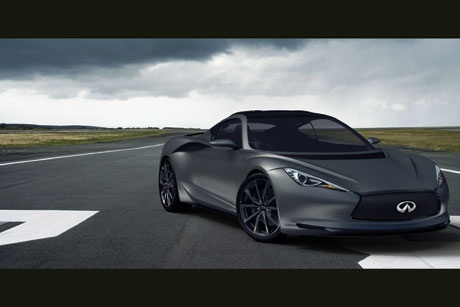
“Nissan has always been a company of ‘monozukuri’ – Japanese for the science of making things,” says Andy Palmer, executive vice-president of the Yokohama-based car manufacturer.
“The company has always been good at this, but awful at ‘kotozukuri’, the art of storytelling,” he adds. “If you think about Japanese companies, their marketing is usually based on the clever Japanese [people]. They are pretty lousy overall when it comes to the art of marketing.”
As the member of Nissan’s nine-person executive committee responsible for overseeing marketing globally, it is Palmer’s job to make the company better at kotozukuri, bringing the brand to life through stories. The most important change Nissan has made in its efforts to achieve this came last year, when the corporate structure was reorganised to bring marketing into closer contact with the product planning division, which Palmer also heads.
“Anything that is, broadly speaking, creative, basically falls under my remit,” he says. “Marketing used to be sales and marketing, as a combined function, while hidden away there was the PR group.”
Marketing and communications have now been brought together, headed by corporate vice-president Simon Sproule, who reports to Palmer on the executive committee. Sproule’s division has been given the freedom to find and tell compelling stories about Nissan.
One result of this is that the company has established its own media centre in Japan, where it films and broadcasts online automotive news programmes. Nissan hired the BBC’s Tokyo bureau chief Roland Buerk to run the division, and has its own staff of journalists and photographers covering news stories in the sector.
Nissan’s marketing and communications also now take much more inspiration from learning about vehicle technology trends that might still be 10 years away, as a result of closer collaboration with the product arm of the business. Conversely, marketers are able to bring the voice of the customer and an articulation of what the brand is supposed to stand for, into the process of product planning and development.
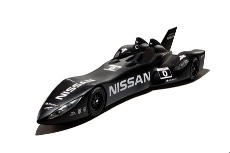
Nissan developed the Delta Wing as a concept car for the Le Mans race
Palmer gives the example of a project at the Le Mans 24-hour race, where Nissan had the chance to work on a concept car known as Delta Wing. It has half the weight, is half the size and has half the fuel consumption and tyre wear of a traditional Le Mans car. Resembling the Batmobile, this project would have been passed up by Nissan under its old structure, Palmer says, but the company saw a marketing opportunity in using new technology to demonstrate what Nissan now represents.
That brand message is ‘innovation and excitement for everyone’. It is the principle behind the recent marketing for Nissan’s two biggest selling models in the UK, the Qashqai, which was also the country’s ninth best-selling car in the first six months of 2012, and the Juke, which was 17th on that list.
But in terms of Nissan’s future, the most important and ambitious expression of those values is its aim to turn the fully electric Leaf model into a mass market car and to be identified by consumers as the pioneer of electric vehicles. According to Palmer, Nissan aims to sell 40,000 of them worldwide in 2012, and 150,000 in 2013 (see Case Study, below).
There is a long way to go to turn this into a market share of 10 per cent for electric vehicles worldwide, which is Palmer’s aim.
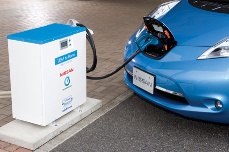
Nissan aims to lead the zero-emissions car market, and is driving development ahead of consumer demand
Yet, as Marketing Week reported last year, Datamonitor predicts that there will be one million hybrid and electric cars on Europe’s roads by 2020 and Palmer says that in the long term, the world economy will have no choice but to make the transition from the internal combustion engine.
Production of the Leaf in the UK, where Nissan is now building and exporting more cars than any other company, is due to begin in Sunderland in 2013, while the first US production capacity will open this December. Nissan has begun sending targeted direct marketing to its UK customer database ahead of a mass consumer marketing effort over the next two years.
Palmer admits the company still has to convince people who view electric cars as ‘something milk is delivered on’ to think about them more positively, likening this to the efforts to shift perceptions of diesel power away from tractors 20 years ago. But even though the Leaf and ‘democratising’ electric technology are such a large part of Nissan’s marketing strategy – making its innovations accessible to everyone – it is not what makes Nissan profitable at the moment.
More and more, profits in the car industry come from the premium end of the market. For Nissan in particular, that means in the medium term it will depend more on the performance of its luxury brand, Infiniti.
Palmer says: “The premium and luxury car makers account for about 50 per cent of the total industry’s profits and 21 per cent of the revenues. That equates to about 11 per cent of total industry volumes worldwide.”
“From a business point of view, premium brands are growing. It’s the same in every sector – whether it’s clothing, travel or hotels, the luxury market for everything is rising,” adds Sproule.
Palmer admits that “Nissan more or less plays in the other 50 per cent”, meaning that it focuses on the everyday end of the market, but the company now wants to forge ahead in the premium segment where profit margins are healthier.
In the 2011 financial year Nissan increased its revenues by 7 per cent to ¥9.4trn (£75bn) and its profits by the same proportion to ¥545bn (£4.4bn). By volume, Nissan increased sales even further – it sold 16 per cent more cars in 2011 than the year before.
While the numbers are clearly going in the right direction, if the Nissan brand were growing progressively stronger it should mean that growth in revenues keeps up with the growth in the number of cars sold. Otherwise, sales increases are likely to be driven by price drops.
Growing the luxury Infiniti brand globally to increase profitability, is a priority, part of Nissan’s six-year business plan which began in 2010. Infiniti has been around since 1989 and for most of that time has been confined to the US market. Only in the past 10 years has it ventured into wider markets, and only in the last four into Europe.
That makes it a young brand in car industry terms, according to Sproule, given that it is competing against established manufacturers such as BMW, Mercedes-Benz and Audi in the premium market. Palmer also points out that only one of these brands, Audi, is sub-brand of an automotive group that mostly competes in the mass market – Volkswagen. BMW and Mercedes make their money primarily in the premium segment.
We have made a lot of mistakes with Infiniti over the years – sometimes it was too close to Nissan. Now we have drawn it away.
Andy Palmer
Audi has succeeded in making it into the top tier of premium cars because of its relative autonomy from VW, says Palmer, something that Infiniti has not historically had as part of Nissan. But he says a luxury car brand requires “a different mindset altogether” in its product planning and customer service approach, and that Infiniti now needs greater independence.
“I could use the analogy of planting two trees too close to each other,” he says. “One will survive and one will die. We have made a lot of mistakes with Infiniti over the years – sometimes it was too close to Nissan. Now we have drawn it away. We have even moved the head office to Hong Kong and started to give it its own identity. The cars are obviously very different from Nissan vehicles.”
Infiniti does have one advantage over its century-old competitors – the youth of the brand allows it to target younger consumers. A high average customer age is a problem that Mercedes is going to great efforts to remedy, as its UK marketing director David George told Marketing Week last year. But if Infiniti is to rival the first rank of premium brands it first has to address a major business obstacle – relatively few people know it exists.
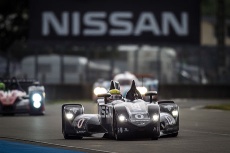
Awareness of the Infiniti marque is up as a result of Nissan’s sponsorship of the Red Bull F1 team
Its answer has been to find a global platform for increasing awareness – Formula 1 racing, which is watched by 550 million people a year around the world (see Case Study, below).
Infiniti F1 director Andreas Sigl says: “We are selling around 150,000 cars a year and we want 10 per cent of global industry volume in the premium segment, which is about 500,000 cars. That’s a significant step up, and you don’t get that through incremental change – you need something big.”
But Sigl adds that when F1 sponsorship was first discussed in 2010, global economic conditions were at their most difficult. At the same time, fellow Japanese manufacturers Toyota and Honda were leaving the sport, as was Infiniti’s competitor BMW.
“We were saying – if we go in, we have to turn things upside down,” says Sigl.
So it decided to sponsor Red Bull’s team, the inverse of the usual sponsorship arrangement in F1, as Sproule notes.
“Traditionally a car company would run the team and a drinks company would sponsor it,” he says. “This time it’s a drinks company owning the team and a car company sponsoring it.”
F1 also fits in with another of Infiniti’s brand attributes, a focus on hospitality - and particularly in relation to Asian culture - according to Palmer. The partnership allows the brand to associate itself with the ‘money-can’t-buy’ experience of an F1 grand prix. The hospitality element also helps it to differentiate itself from the mainly German brands that it wants to compete with, which historically have focused on engineering.
Sproule says sponsorship is looking “more and more interesting” to global brands, particularly as the impact of TV advertising campaigns is softened by audiences spreading across viewing platforms. While there will always be a place for TV, outdoor, print and online advertising, he says, working with Red Bull is opening Nissan’s eyes to opportunities to generate its own branded content through sponsorship.
This is something Red Bull excels at, using its own media centre in Japan. Sproule believes the continuing fragmentation of TV audiences means having in-house content production facilities will be increasingly necessary.
“We haven’t even scratched the surface of the impact of web TV,” he says. “The more I see and understand of the convergence of screens inside the home, the more I wonder whether anyone is going to sit there and watch ads any more on television.
“Logically, they’re going to be seen by fewer and fewer people, so how else do we get in front of viewers? We’ve got to create stuff as a brand that people are going to watch.”
In February, Nissan signed up as the official automotive partner of the Rio de Janeiro 2016 Olympics, in a deal reportedly worth $250m (£160m). It is expected to use the Games as a showcase for electric vehicles.
As the six-year business plan progresses towards 2016 and the Olympics in Rio, sponsorship and related media content will undoubtedly grow in importance in Nissan’s marketing strategy. But while Nissan’s biggest business developments are forward-looking, the company also has to get on with the day-to-day job of selling cars.
Numbers of cars sold are meeting targets in important growth markets such as China, but Nissan’s most recent quarterly results show that sales incentives and the volatility of the Japanese yen continue to drag on profitability. European sales declined as economies there got smaller or stayed flat.
Last year’s results exceeded expectations, however, as Nissan shrugged off the effects of the Fukushima earthquake in March 2011, which temporarily shut two of its plants. Growth in a year when national disaster struck at the heart of the business is a good indicator of a company that has resiliently refined the science of making things. Next, it needs to keep up the progress it is making in the art of storytelling.
Case study: Nissan Leaf
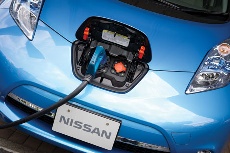
Nissan has high hopes for the Leaf, its fully electric, zero-emissions model launched in the second half of 2010. As of July 2012 the company had sold around 32,000 Leafs worldwide.
Executive vice-president Andy Palmer says Nissan aims to sell 40,000 globally this year and 150,000 in 2013 on the way to making the Leaf the first mass market fully electric vehicle – and Nissan the leading brand in the field of electric cars.
But mass adoption seems a distant ambition given that Nissan’s Qashqai model – its most popular in the UK – sold nearly 40,000 units in the UK alone in 2011, more vehicles than the Leaf has sold to date around the world.
And it is distance, or what Palmer calls “range anxiety”, that he admits is holding the Leaf back at present. Consumers fear the battery will run out while driving, leaving them stranded on the road with no means of recharging.
Nissan’s tests show that the distance a Leaf could cover on a single charge in the worst-case scenario – being stuck in heavy stop-and-go traffic for about eight hours with the air conditioning on – is around 47 miles (76km), while tests to US government standards give it an official range of 73 miles (117km).
Palmer says that should be enough to win the market share Nissan is targeting, although he admits there is a marketing job to do first, to give people confidence in the technology.
“About 34 per cent of consumers in the B and C social classes never drive more than 100km [in one journey] – not even once -– and electricity is around a tenth the cost of diesel or gasoline,” he says. “Those 34 per cent of customers shouldn’t be considering anything else, being purely rational. And we’re only talking about getting 10 per cent [worldwide].”
Clearly, consumers do not always think this way. The Leaf’s price and appearance are also deterrents, critics say, while the charging infrastructure remains a concern. In the UK the Government wants 9,000 charging points to be available by 2013, although reports suggest the rate of installation is falling behind this target as growth in demand for electric cars remains slow.
With the capacity to install 400,000 batteries a year, according to Palmer, Nissan is driving the development of fully electric vehicles ahead of consumer demand – a risky strategy when he admits that “the technology is expensive and battery costs are very high”. But Nissan’s aims for the Leaf are long term and the marketing upsides the company is experiencing from trying to create demand for the car go beyond sales, Palmer argues.
“The only way you can change the business is to go large,” he says. “That brings economies of scale and, of course, allows us to own the position of being the zero-emissions developer for the world. Volkswagen ‘owns’ diesel and Toyota owns hybrid, so what are we going to do – are we just going to follow? What we’re saying is: we own the zero-emissions space.”
Case study: Infiniti and Formula 1

“As long as there has been the car industry there has been racing,” says Nissan corporate vice-president Simon Sproule. “In its purest form, it is about proving that you are faster, better and more reliable than the other guys.”
But when Sproule, who leads Nissan’s global marketing and communications division, selected Formula 1 sponsorship as a marketing vehicle for Nissan’s luxury car brand Infiniti, he had a more mundane marketing issue in mind.
“How we arrived at F1 was not a desire to go racing, but we had a business problem to address, which was awareness of the Infiniti brand,” he says. “Basic awareness is still low. We are competing against luxury brands that have been around for 100 or more years. We wanted people to finally say: I’ve heard of Infiniti.”
Given that Nissan wants Infiniti to be seen as a premium brand with a global market, it needed a platform with the same attributes to raise awareness. Sproule says that the choices were quickly whittled down to two – English Premier League football or F1 racing. Nissan chose to sponsor F1’s Red Bull team, which includes the German driver Sebastian Vettel and the Australian Mark Webber.
French car manufacturer Renault, which owns 43 per cent of Nissan, helped open the doors to the garage of the Red Bull team, for which Renault provides the engines.
Results were seen straight away, says Nissan executive vice-president Andy Palmer. Unaided awareness of Infiniti in Europe was only 2.5 per cent before Infiniti signed the Red Bull deal in 2010, but in its first full season in F1 last year this increased substantially. He also claims the Infiniti branding on Red Bull’s cars got more airtime than did the branding of F1 manufacturers Ferrari and Mercedes-Benz.
Making a link between F1 technology and Infiniti’s consumer vehicles is a tougher ask, Infiniti F1 director Andreas Sigl says, because “we make road cars, we don’t run F1 teams”. He adds that over time the marque wants to be “more than just stickers on the car”.
That has started with technical knowledge-sharing. Red Bull contributes insight on aerodynamics and weight reduction that feeds back into Nissan’s product development, while Infiniti and Nissan pass back expertise, particularly on battery systems.
Sigl has also been quoted as saying that Infiniti wants to produce a “halo” model that would make the links with high-end racing cars clear. But Sproule says that “the Infiniti branding is step one. We started off fixing the awareness issue, and then it’s about storytelling.”

Q&A
Andy Palmer
Executive vice-president, global planning and global marketing
Nissan Motor Company
Marketing Week (MW): How did Nissan’s restructuring last year affect the role of marketing within the company?
Andy Palmer (AP): We combined marketing and communications and separated sales, because to my mind that is a different discipline altogether. Then we brought the marketing guys right upstream to join the product guys so they could start writing compelling stories from five years out, when the idea of a car is conceived.
It gives an opportunity to bring the voice of the customer to the product planners and at the same time the marketing and PR guys start to discover the stories from the development process. The logic of the organisation is that marketing planning is creative, and product planning is creative – if you put the two together you can create a better product and a better story.
MW: How do marketers influence product planning and vice versa?
AP: Our marketers attend meetings talking about customer trends 20 years out. That means marketing learning about trends from the guys doing the research, but as you get down to the product plan five or six years out, clearly marketing has a big voice at the table. Bringing the voice of the customer from today is only partially relevant because you are also trying to anticipate the customer of the future.
The thing that has to be consistent throughout is the brand. Marketers are at the table as the reminder, the nagging voice on the shoulder, saying: ‘how does this fit the brand?’.
MW: What future trends are behind Nissan’s push to make the Leaf electric car a mass market vehicle?
AP: About 800 in every 1,000 people in the US own a motor car. In India or China, broadly speaking, it is 60 or 70 per 1,000. These countries are emerging and clearly that means there are going to be a lot more cars in the world. The planet can’t possibly handle the carbon dioxide. We know what happens to the planet when the world’s temperature rises by 2 degrees. If you take the present trend it will rise by 6 degrees and then no scientist can predict what will happen, so something’s got to give.
MW: With such a small customer base and electric vehicle technology being so expensive, what does Nissan get out of driving the market forward?
AP: The brand now stands for something. If you went back two or three years and said ‘What does Nissan stand for?’ asking 100 people, you would get 100 different responses. But we see our brand opinion significantly rising as a result of Leaf. We have gone from nowhere to somewhere and it’s bringing brand equity.

Q&A
Simon Sproule
Corporate vice-president, global marketing and global motorsport
Nissan Motor Company
Marketing Week (MW): How does motorsport generally contribute to consumer marketing in a car company?
Simon Sproule (SS): Motorsport, because it is so extreme, is either saying we have better technology, we have more power, we have better engines or we’re more reliable. It’s an opportunity to say we’ve got those technical capabilities.
The logic is that people like being with a winner. They see you winning on the track and it reflects well on your road cars. The second part is the technology transfer, which is sometimes hit and miss. There is a healthy degree of cynicism from the media and the public about what goes on a Formula 1 car that can go on a road car. The third piece is brand awareness.
MW: What technology has transferred to Nissan’s Infiniti cars through its partnership with the Red Bull F1 team?
SS: We now have a technical committee where Infiniti and Nissan engineers meet the Red Bull team. We have half a dozen projects underway and from being a sponsor we are now becoming a technical partner. We are investigating technologies for road cars in 10 years’ time that involve a more efficient power train, lighter materials and so on.
MW: What holds you back from making more of the links between racing cars and road cars?
SS: There are a lot of engineering projects that don’t go anywhere. They find there is nothing there or they research to a point where they say it doesn’t make sense. It will be a function of the actual application of the technology, but we are confident that in the coming years we are going to find some good technology stories and a transfer between the F1 team and the car company.
MW: How do Nissan’s and Infiniti’s marketing strategies differ in the ways they draw on motorsport?
SS: Nissan is focused on sports cars, Le Mans prototypes and that sort of area, while we picked F1 for Infiniti because F1 is a premium product. We are moving the Nissan brand much more towards a focus on accessible innovation – smart stuff you can afford, not esoteric stuff that is only on two cars, but something that has mass availability and excitement. As a brand we feel – and we want to project an image for Nissan – that we are more sporty and fun to drive than some of our competition.









